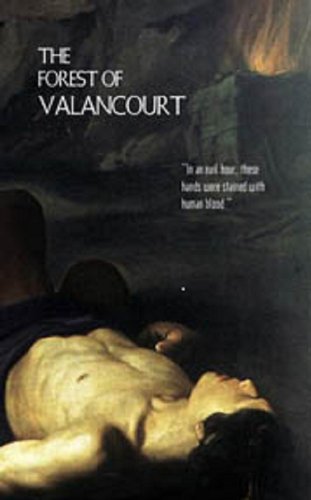
Originally published in 1813, The Forest of Valancourt is noteworthy for being a particularly rare Gothic novel. Prior to this re-publication, only one copy remained in existence at the Bodleian Library in Oxford. Major kudos to Valancourt Books for bringing it back to life. Now they are a major publisher of the rare and obscure, but this appears to be one of their first re-print efforts. And quite a fitting title, I must say.
As for the novel itself, it’s pretty terrible. I’ve never read anything paced so furiously. Drama flies in all directions, with battles, breakups and blunders all happening simultaneously. No time to linger upon the conflict’s significance, we’re immediately set off to the next disaster. Nearly every paragraph begins with a “Three weeks later” or “later that day” or “suddenly” or “abruptly” to signify a vast transition. Further contributing to the cacophony of chaos is the large cast and shifting POV, which skips from person to person like a pebble in rapids.
So much happens it’s really hard to keep track of it all. To me, at least, it seems someone is murdered at least once a chapter, and that’s not counting the rattling skeletons and pop-up ghosts. While all that drama may sound like an action-packed thrill ride, it’s more like watching Sharknado while inside the tornado. It’s all whirling around so fast there’s only the vaguest glimpse of danger before being spun away.
Whatever hardcore drugs they had back in 1813, Peter Middleton Darling must’ve been on them all.
I will give kudos to the dialogue. Darling has an ear for theatrics and every time a character speaks it’s a soap operatic, exclamation point-infused hoot. Even while having no idea which character is which, or any clue what is going on, I could enjoy reading their snappy arguments all day.
Formatting-wise, Valancourt Books made the decision to not do any editing despite a large number of typos, misspellings, and other issues in the surviving text. It’s a tough call. Personally, I would have preferred they go ahead and fix some misspelled words, but when the major/only appeal of this book is its historical significance, it was probably smart to leave well enough alone. I did wish they formatted the Kindle edition with indented paragraphs rather than HTML format, but this was made back in the early eBook days so maybe that’s why.
Overall, with so many fabulous classic gothic novels to read, I don’t know that this one should be placed high on the list. For academics there may be some folly in analyzing the genre when it’s thus performed at a cocaine pace. In 1813 the Gothic Novel was still a relatively new invention so there’s also some fascination to watch an amateur try to recreate what masters like Ann Radcliffe and Matthew Lewis achieved.
